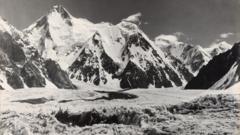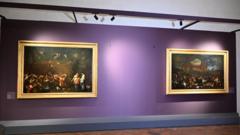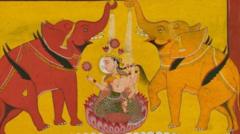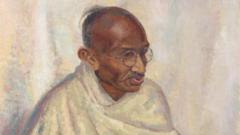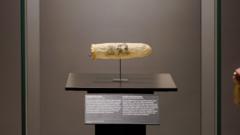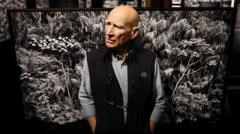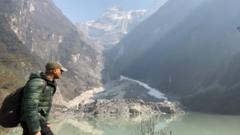Vittorio Sella, an Italian photography trailblazer, crafted some of the most stunning and timeless images of the Himalayas in the early 20th century. His rare work, including breathtaking views of Kanchenjunga and K2, is currently showcased in a major exhibition in Delhi titled "Vittorio Sella: Photographer in the Himalaya." Curated by the esteemed British explorer Hugh Thomson and hosted by Delhi Art Gallery, this exhibit comprises a significant collection of Sella's Indian photographs, capturing the grandeur of the mountains.
Sella, born in the wool-centric town of Biella, Italy, became an influential figure in mountain photography. His expeditions into the Alps in his youth honed his skills in complex photographic processes like the collodion method, allowing him to navigate harsh environments while developing large-format images. He quickly earned a reputation for technical precision and artistic vision.
His fascination with the Himalayas began in 1899, as he joined an expedition alongside British explorer Douglas Freshfield to circumnavigate Kanchenjunga. Despite the challenges of relentless rain that thwarted climbing attempts, Sella captured pristine, snow-covered landscapes, experimenting with emerging technology and advancing photographic techniques.
By 1909, Sella embarked on a significant expedition to K2 with the Duke of the Abruzzi. His journey to photograph this formidable mountain was no small feat; equipped with roughly 30 kilograms of photographic gear, Sella traversed treacherous terrains and produced around 250 images during his exploration. His dedication to his craft was evident in the care he took with each photograph, knowing he had limited resources and equipment.
Renowned mountaineer and author Jim Curran hailed Sella as possibly the greatest mountain photographer, associating his name with unmatched technical ability and breathtaking artistry. Complications such as damaging humidity often plagued Sella’s high-altitude work, but the surviving images showcased a remarkable eye for detail. Thomson notes that Sella understood the critical role of elements like snow tracks in framing his compositions, elevating them beyond mere documentation to true artistic expressions.
Beyond the historical significance of his work, the exhibition aims to resonate with modern audiences by highlighting Sella's extraordinary contributions to photography and mountaineering. Ansel Adams, a later mountaineer-photographer, captured the spirit of Sella’s work when he commented on its ability to incite a feeling of religious awe in viewers. Today, Sella’s legacy endures, allowing us to explore a world that once was, and inspiring new generations to connect with the majestic beauty of the Himalayas.
Sella, born in the wool-centric town of Biella, Italy, became an influential figure in mountain photography. His expeditions into the Alps in his youth honed his skills in complex photographic processes like the collodion method, allowing him to navigate harsh environments while developing large-format images. He quickly earned a reputation for technical precision and artistic vision.
His fascination with the Himalayas began in 1899, as he joined an expedition alongside British explorer Douglas Freshfield to circumnavigate Kanchenjunga. Despite the challenges of relentless rain that thwarted climbing attempts, Sella captured pristine, snow-covered landscapes, experimenting with emerging technology and advancing photographic techniques.
By 1909, Sella embarked on a significant expedition to K2 with the Duke of the Abruzzi. His journey to photograph this formidable mountain was no small feat; equipped with roughly 30 kilograms of photographic gear, Sella traversed treacherous terrains and produced around 250 images during his exploration. His dedication to his craft was evident in the care he took with each photograph, knowing he had limited resources and equipment.
Renowned mountaineer and author Jim Curran hailed Sella as possibly the greatest mountain photographer, associating his name with unmatched technical ability and breathtaking artistry. Complications such as damaging humidity often plagued Sella’s high-altitude work, but the surviving images showcased a remarkable eye for detail. Thomson notes that Sella understood the critical role of elements like snow tracks in framing his compositions, elevating them beyond mere documentation to true artistic expressions.
Beyond the historical significance of his work, the exhibition aims to resonate with modern audiences by highlighting Sella's extraordinary contributions to photography and mountaineering. Ansel Adams, a later mountaineer-photographer, captured the spirit of Sella’s work when he commented on its ability to incite a feeling of religious awe in viewers. Today, Sella’s legacy endures, allowing us to explore a world that once was, and inspiring new generations to connect with the majestic beauty of the Himalayas.

